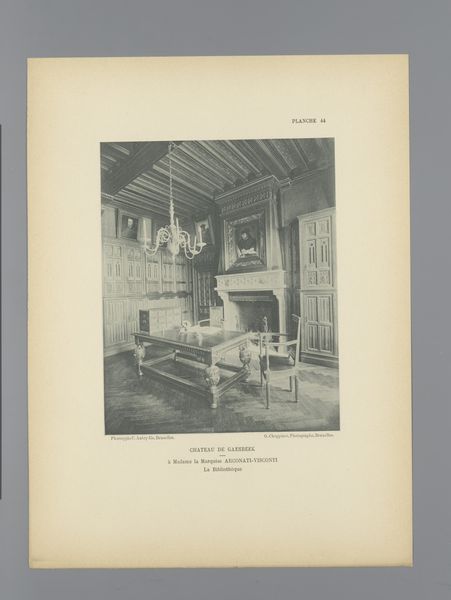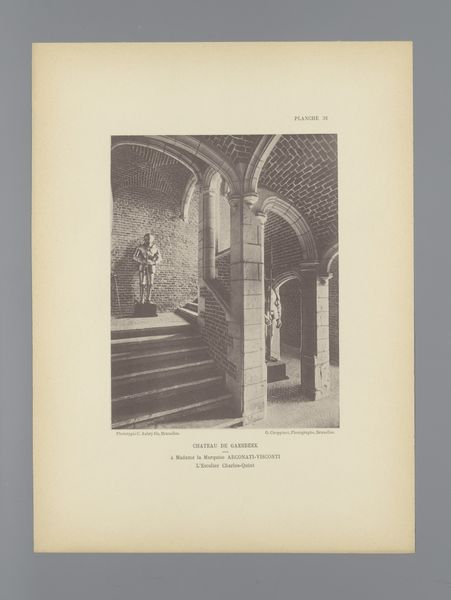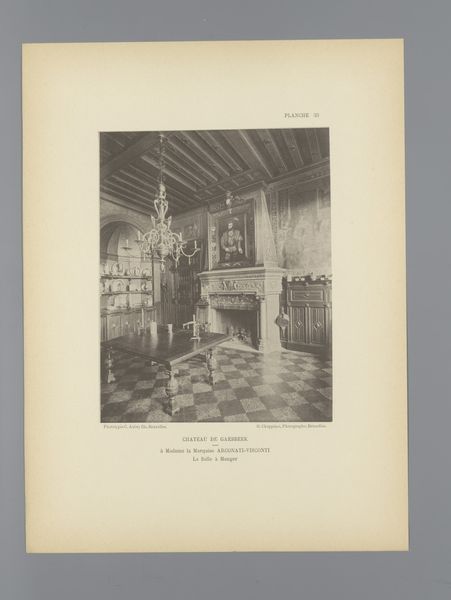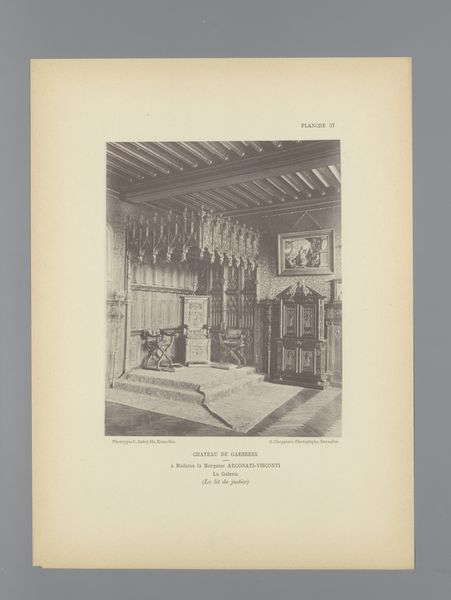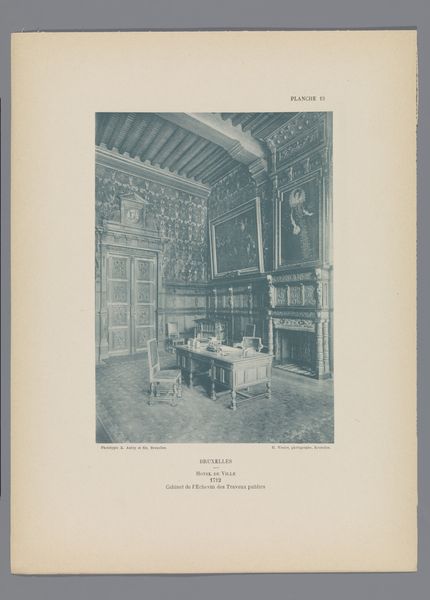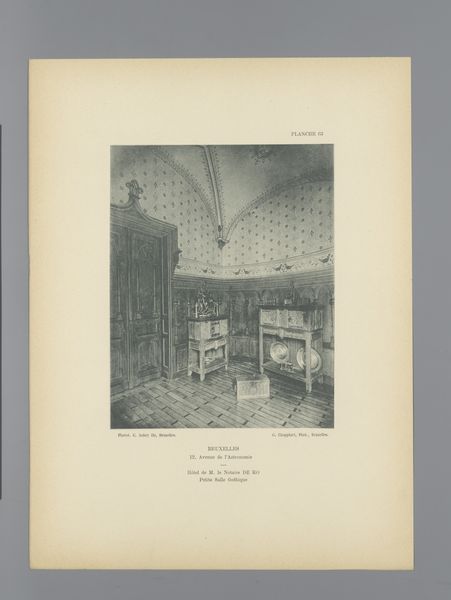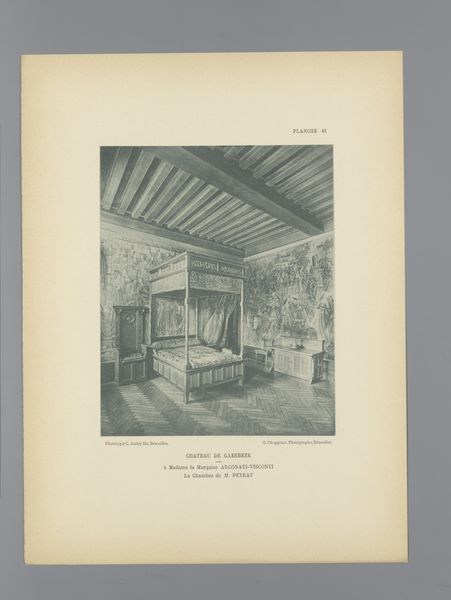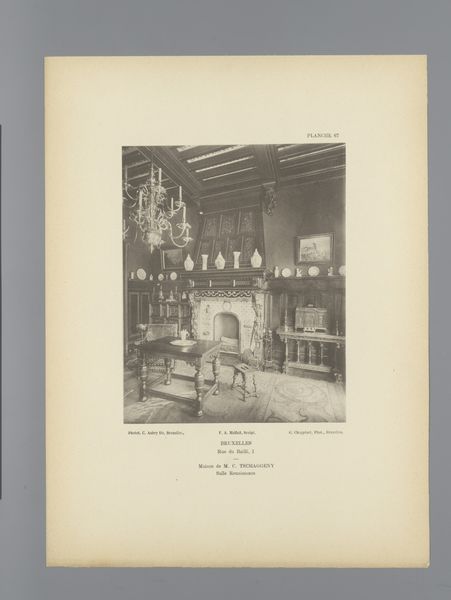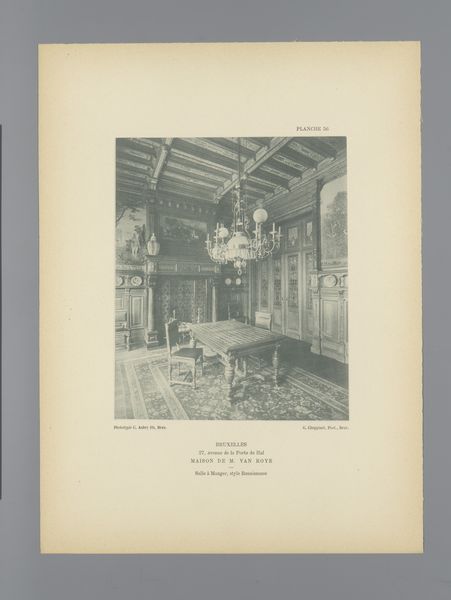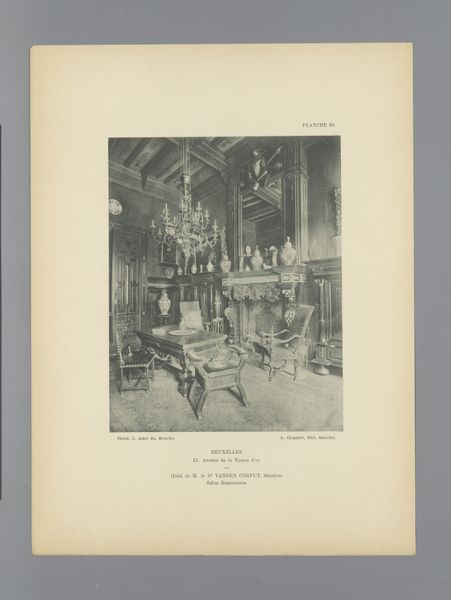
print, photography
# print
#
photography
#
realism
Dimensions: height 198 mm, width 158 mm
Copyright: Rijks Museum: Open Domain
Editor: So, here we have G. Choppinet’s photograph, taken before 1898, titled "View of the Archive Room in Gaasbeek Castle, Belgium.” It strikes me as quite formal and still; almost a stage set awaiting actors. What social dynamics might have been at play within those very walls? Curator: That's a fantastic entry point. Consider how the “archive” isn’t simply a neutral space but actively shapes and reflects power. How does the photograph, through its very stillness, silence voices? We must think about who *had* access to such spaces, and whose histories were being documented, and therefore, legitimized. What might that heavy chair symbolize in the construction of aristocratic identity, as presented by Choppinet? Editor: So, it's not just about recording history, but also about *controlling* the narrative… I notice the architecture feels both grand and somewhat forbidding, like access was heavily restricted. Curator: Exactly. Look at the way light is managed. What isn't revealed? Photography at this time becomes another tool of authority, not unlike the written record. It’s participating in creating a particular image of not only the Chateau but of its occupants, who Madame la Marquise Arconati Visconti was, what she represented and her role in constructing her own carefully curated history. Editor: That makes so much sense. So, even in its stillness, it's actually a really powerful, carefully constructed image, reflecting that historical power dynamic. Thank you! Curator: Absolutely. Analyzing how visual culture reinforces systems is how we begin to question the very foundations upon which societal memory is based. I hope this offers a critical lens when visiting archives of the present and the future.
Comments
No comments
Be the first to comment and join the conversation on the ultimate creative platform.
